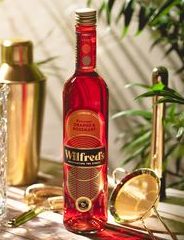In recent years, a global trend towards “subtracting” has emerged in the beverage market, with various drinks emphasizing “0 sugar,0 fat,0 calories” becoming the preferred choice for those combating calorie concerns and satisfying taste buds. This trend has propelled new consumer brands, such as the representative “vitality forest,” to rapid prominence.
Now, this “subtracting” trend has extended to the beer market, but unlike reducing sugar and fat, the “subtracting” in the beer market involves removing alcohol.
According to the “China Moderate Drinking Happy Life Blue Book” released by the China Alcoholic Drinks Association in 2022, China has over 450 million alcohol consumers, with the proportions of consumers of spirits, beer, and white spirits being 45%,40%, and 33%, respectively. Among them, there are 123 million excessive drinkers. Research indicates that excessive alcohol consumption can cause varying degrees of damage to the digestive system, cardiovascular system, nervous system, musculoskeletal system, and even increase the risk of cancer.
As consumers grapple with the dilemma of social demands, pursuit of excitement, and the impact on health, the emergence of alcohol-free beer provides a new choice. According to QYResearch’s “Global Non-Alcoholic Beer Market Forecast 2029,” the global market for alcohol-free beer is projected to grow from $670 million in 2023 to $10.63 billion in 2029, with an expected Compound Annual Growth Rate (CAGR) of 7.9%[1].
Amidst such growth, one can’t help but wonder: Is alcohol-free beer enjoyable? How are manufacturers positioning themselves in this market? Can “fancy” ingredient additions truly enhance the possibilities of beer?

Distinguishing Alcohol-Free Beer from Soda
Alcohol-free beer, also known as non-alcoholic beer, undergoes a production process similar to regular beer, including malting, grinding, brewing, fermentation, maturation, and packaging. Internationally, beer with an Alcohol by Volume (ABV) not exceeding 0.5% is considered alcohol-free.
While alcoholic beer isn’t entirely devoid of alcohol, its content is extremely low. Just as high-sugar fruits like lychee, waxberry, durian, and grapes, common in daily life, can produce some alcohol when combined with oral microbiota, the similar brewing process explains why alcohol-free beer is categorized as beer rather than a beverage.

The “Zero-Degree Cola” of the Beer World:
The origin of modern alcohol-free beer can be traced back to the large-scale temperance movements in 19th-century European and American countries. Under restrictions, commercialization of alcohol-free beer began. In recent years, with evolving concepts of healthy eating, the alcohol-free beer industry has experienced explosive growth.
Research by Mintel reveals that over 38% of Indians prefer transitioning from standard-strength beer to low-alcohol or alcohol-free versions. The UK Office for National Statistics reported a sample size of non-drinkers in the country that was nearly two hundred percentage points higher than a decade ago. IWSR’s survey data on alcohol consumption among US adults in 2021 showed that 43% had purchased low/alcohol-free beverages.
(I) European and American Markets
Digging deeper, the alcohol-free beer industry in the European and American markets has an early and significant presence. Only two major companies, AB InBev and Heineken, hold 60% of the global market share for alcohol-free beer. Europe, in particular, constitutes about 38% of the global alcohol-free beer sales market[3].
Carlsberg, in its 2021 financial report conference call, revealed plans to more than double the sales of alcohol-free beer, with a specific focus on the Asian market. AB InBev aims to convert 20% of its beer sales to alcohol-free and low-alcohol (ABV not exceeding 3.5%) products by 2025.

(II) Asian Market:
According to Global Market Insights data, the Asia-Pacific region’s low/alcohol-free beverage market is expected to grow by over 7% from 2019 to 2025.
Japan stands out as one of the most receptive markets for alcohol-free beer. The two major Japanese breweries, Asahi and Kirin, launched “Asahi Super Dry 0.0%” and “Green’s Free” alcohol-free beers in 2020. Asahi has set a new sales target that by 2030, 20% of its product lineup will offer alcohol-free alternatives.
In the Chinese market, traditional brands like Tsingtao, Yanjing, and Snow Beer have introduced alcohol-free beer products within three years. Additionally, new consumer beer brands, represented by New Zero Beer, have emerged, targeting the consumption market of Generation Z.

Consistent Taste as a Consumer Threshold
Whether driven by personal preference or social demand, the paramount consideration in choosing beer remains taste. According to the “2020 Liquor Industry Enjoyable Life Consumption Trend Report” by Netease & Zhimeng “good taste” ranks as the highest concern for consumers when purchasing alcoholic beverages, with a staggering 50.5% attention rate.
Applied to alcohol-free beer, this issue translates to “maintaining a taste similar to real beer without being excessively bland or bitter.” To leave consumers with a favorable first impression of taste, beer manufacturers typically start with a well-made original alcohol-free beer and then explore additional flavors.
Heineken’s “Heineken 0.0,” brewed with whole malt and hops, maintains Heineken’s consistent refreshing and balanced taste.

In contrast, craft beers preserve the natural flavors of ingredients to the maximum during the brewing process, resulting in a richer, more robust taste. For example, the alcohol-free IPA beer from the American brewery Lagunitas maximally retains the pine, citrus aroma, and some bitterness. Another craft brand, Bravus, specializes in a chocolate, coffee, and caramel-flavored black beer.
Another prevalent flavor category is the consumer-friendly “fruit flavor,” which is highly accepted and stimulates more possibilities for the collision of fruits and malt. Germany’s Clausthaler’s alcohol-free beer, Santa Clausthaler, combines the classic brew with cranberry and cinnamon, giving it a naturally fruity fragrance.

Bavaria’s alcohol-free beer, focusing solely on fruit flavors, offers a variety of options like lemon, peach, pomegranate, strawberry

Reference:
[1]”Global Non-Alcoholic Beer Market Insights, Forecast to 2029″, QYRESEARCH
[2]”Research on Alcohol-free Beer Production Technology”, Guangzhou Sugarcane Sugar Industry Research Institute
[3]”2021-2025 U.S. Craft Beer Market Investment Environment and Investment Prospects Assessment Report”, New Thinking Industry Research Center
[4] “Carlsberg collaborates on AI research into beer flavors and aromas”, Food Insight 1st
[5] Melton, L. Synbio salvages alcohol-free beer. Nat Biotechnol 40,8 (2022).



